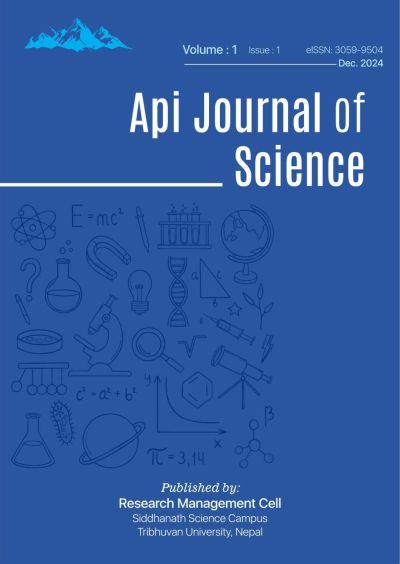Computational evaluation on reactivity, stability, and Hirshfeld surface analysis of caffeine-maleic acid cocrystal: Insights into molecular interactions
DOI:
https://doi.org/10.3126/ajs.v1i1.75488Keywords:
Caffine-maleic acid, Cocrystal, Hirshfeld surface, Molecular electrostatic potential, QTAIMAbstract
This work presents a computational evaluation of the caffeine-maleic acid cocrystal using density functional theory at the B3LYP/6–311++G(d,p) level of theory to gain a comprehensive understanding of molecular interaction. The purpose of this study is to use quantum chemical calculations to assess the strength of intra- and intermolecular interactions between API caffeine and coformer maleic acid, as well as within cocrystal, to predict the superiority of chemical reactivity and stability over API caffeine. The cocrystal was optimized, and geometrical parameters were compared to those parameters of crystal structure, which showed good agreement except at the intermolecular hydrogen bonding sites. The QTAIM analysis indicated a strong intermolecular hydrogen bond H29...N8 between caffeine and maleic acid, with strength of –16.152 kcal/mol. This finding was also supported by the isosurface of the RDG scatter plot. The intermolecular hydrogen bonding interaction O...H was discovered to be significant in crystal packing, as evidenced by its 42.4% contribution to the Hirshfeld surface of the caffeine-maleic acid cocrystal. The electrostatic potential on the molecular surface of the cocrystal justified the sites H24 and O27 being proper for the nucleophilic and electrophilic attack with global maximum and minimum potential, which also support O...H intermolecular hydrogen bonding in the crystal packing of the caffeine-maleic acid cocrystal. The frontier molecular orbital energy gap in the caffeine-maleic acid cocrystal was found to be 4.018 eV, which is less than the energy gap in API caffeine, implying that the cocrystal is more reactive, polarizable, and kinetically less stable than caffeine.
Downloads
Downloads
Published
How to Cite
Issue
Section
License
Copyright (c) 2024 RMC, Siddhanath Science Campus

This work is licensed under a Creative Commons Attribution-NonCommercial 4.0 International License.
This license enables reusers to distribute, remix, adapt, and build upon the material in any medium or format for noncommercial purposes only, and only so long as attribution is given to the creator.




